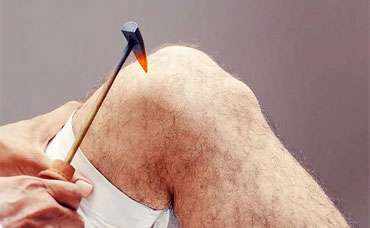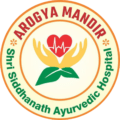अग्निकर्म – Agnikarma (Therapeutic Heat Burn)

Agnikarma, an ancient therapeutic practice rooted in Ayurveda, holds a unique position in traditional Indian medicine. This article will delve into the intricacies of Agnikarma, providing an in-depth understanding of its principles, procedures and applications.
I. Introduction
A. Definition of Agnikarma
Agnikarma, literally translated as “thermal cauterization,” involves the controlled application of heat for therapeutic purposes. It is a distinctive aspect of Ayurvedic medicine, aiming to restore balance to the body’s vital energies.
B. Historical Significance
Tracing its roots to ancient texts like the Sushruta Samhita, Agnikarma has been practiced for centuries, showcasing its enduring significance in traditional medicine.
II. Principles of Agnikarma
A. Fire as a Healing Agent
Central to Agnikarma is the belief in fire’s transformative and healing properties. Ayurvedic philosophy posits that controlled heat can stimulate the body’s healing mechanisms.
B. Ayurvedic Philosophy behind Agnikarma
Understanding the doshas (Vata, Pitta, Kapha) and their imbalances is crucial in Agnikarma. The therapy is tailored to address specific doshic imbalances. It generally reduces Vata and Kapha dosha.
III. Procedure of Agnikarma
A. Preparation for the Procedure
Before Agnikarma, a thorough assessment of the patient’s constitution and the targeted ailment is conducted. This individualized approach ensures optimal outcomes. Over the skin of patient, we mark the areas where we want to apply Agnikarma.
Specialized instruments, often metallic, wax or mud, are employed in the procedure. These tools aid in precise application of heat to specific points on the body. This instruments are heated on fire. When metallic instrument (Shalaka) gets red hot then we can procced to do Agnikarma.
B. Application Process
The practitioner skillfully applies heat to the affected area, carefully monitoring the patient’s response. The controlled burning process aims to eliminate toxins and stimulate healing.
C. After Care
After successful application of Agnikarma, practitioner apply ghee over the area and rub it. Patient must stay under observation after this procedure for at least 30 minutes. All the areas where Agnikarma has been applied must be observed after 30 minutes. If anything abnormal seen then proper management is needed.
IV. Conditions Treated with Agnikarma
A. Musculoskeletal Disorders
Agnikarma has shown efficacy in addressing conditions like arthritis and joint pain. The heat promotes circulation and reduces inflammation.
B. Neurological Disorders
Certain neurological conditions, including paralysis and neuropathy, are believed to benefit from Agnikarma’s therapeutic heat.
C. Dermatological Conditions
Skin disorders such as psoriasis and eczema may find relief through Agnikarma, with the controlled burn promoting skin rejuvenation.
V. Benefits and Limitations
A. Positive Outcomes of Agnikarma
Patients often report reduced pain, improved mobility, and enhanced overall well-being following Agnikarma treatments.
B. Potential Side Effects and Precautions
While generally safe, Agnikarma may have side effects, including temporary discomfort, discoloration and swelling etc. It is essential to follow post-procedure care guidelines.
X. Popular Misconceptions
- Myth – Agnikarma is very painful procedure
- Fact – There are two types of Agnikarma. Direct and Indirect. Out of which direct agnikarma is painful. But Indirect agnikarma is less painful.
- Myth – After Agnikarma, mark remains and swelling occurs.
- Fact – Mark and swelling are not seen in many cases. But in some cases, it happens. Even if it happens then this mark and swelling will get reduced in next 48 hours.
XI. Precautions and Contraindications
A. Who Should Avoid Agnikarma?
Certain individuals, such as pregnant women and those with specific health conditions, are advised against Agnikarma. A thorough consultation is crucial. People with Pitta disturbance or Pitta prakruti are also advised to avoid it until it is must needed.
B. Considerations for a Safe Procedure
Proper and clean environment is must. All instruments must be clean before every session of Agnikarma. Proper therapiest and doctors observation are needed.
FAQs
Agnikarma is an Ayurvedic therapy involving the controlled application of heat for therapeutic purposes.
Agnikarma stands out for its use of controlled heat, targeting specific points on the body, unlike other Ayurvedic therapies.
While generally safe, Agnikarma may not be suitable for certain individuals, and a consultation with a qualified practitioner is advised.
While uncommon, temporary discomfort and mild side effects may occur. Following post-procedure care guidelines is essential.
Agnikarma should only be performed by trained practitioners. DIY practices at home are discouraged due to the complexity and potential risks involved.
Uniqueness of our therapies
At Arogya Mandir – Shri Siddhanath Ayurvedic Hospital, Miraj, we delve deeply into the ayurvedic examination of each patient. Utilizing noninvasive Ayurvedic diagnostic tools such as Ashtavidha Parikshan and Nadi Parikshan, we precisely determine the pathogenesis of the disease and then prescribe therapies tailored to the specific condition. This approach leads to expedited results.
Our therapies boast the following distinctive features:
– Tranquil and hygienic therapy rooms staffed with trained therapists in a positive environment.
– Selection of appropriate massage oil based on the patient’s Prakruti and the condition of the disease.
– Complimentary Prakruti and Dhatu Sarata examinations before the commencement of therapies.
– Authenticated procedures for each therapy.
– Judicious use of herbal medicines and instruments during the therapy sessions.
– Specialized rooms equipped with all facilities for inpatient care.
Feel free to share this article at no cost.
Copyright message – Dr. Prashant Chivate has published this article on drchivateayurved.org for informational purposes about diseases. Any other use of this article is strictly prohibited. All rights reserved.
